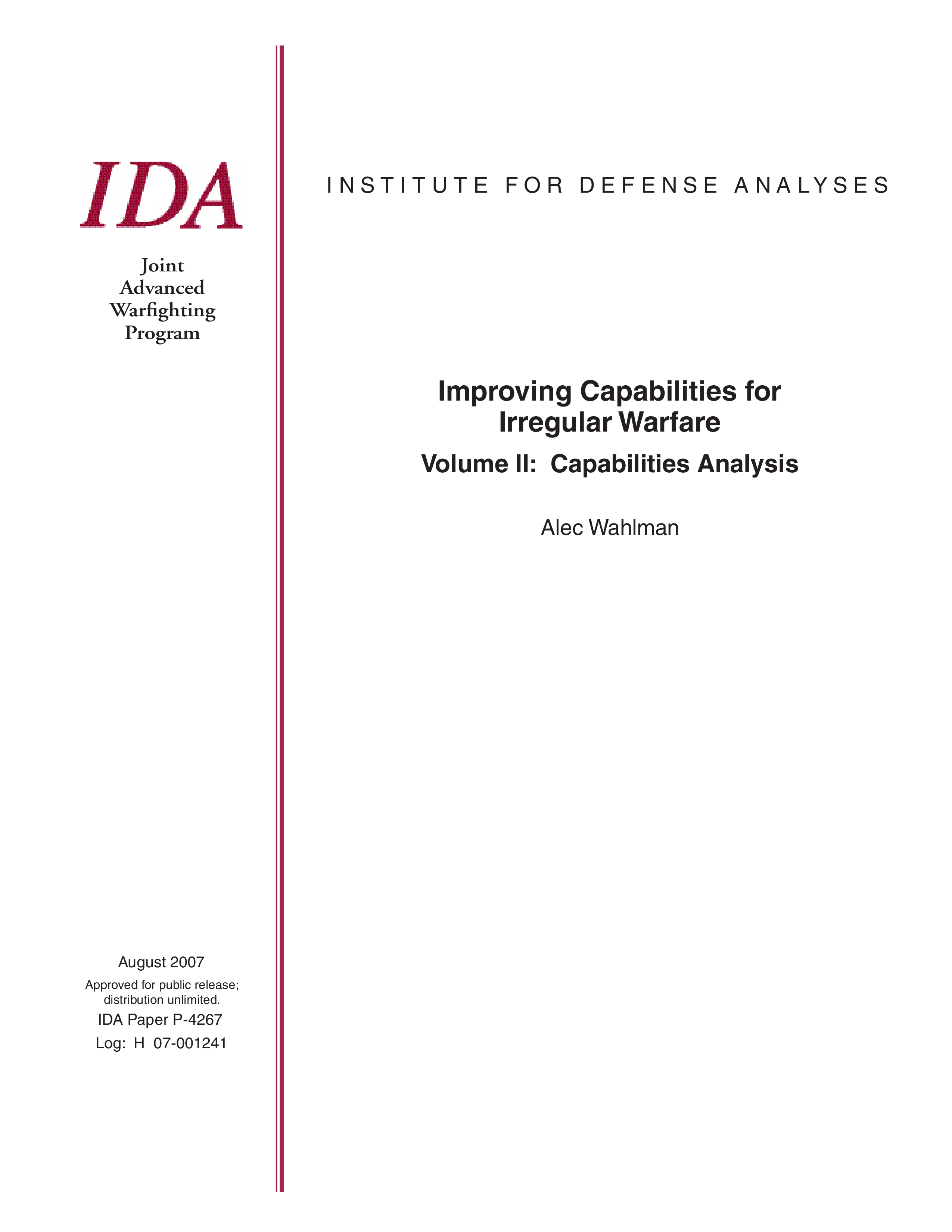This two-volume report describes a framework for identifying program initiatives aimed at significantly improving US capabilities for irregular warfare (IW). The framework has two components: a characterization of the capabilities needed to conduct IW in terms of the type of capability (Understand, Shape, Engage) and the object being addressed (Environment, Population, Host-Nation Government, Red, Blue); and a set of five attributes (Human Terrain, Civil-Military Coordination, IW Combat Characteristics, Consolidation, and Transition) that distinguish IW from “regular warfare.” The report first applies the framework to Iraq-like IW. It identifies a set of twenty-three high-level missions and ninety-two capabilities, which are broadly assessed on the basis of recent performance. The report then applies the framework to specific areas of high importance: Transition, Theater Communications, Personal Interactions, Civilian and Military Organizations and Activities, Policing-Related Capabilities, and Technology. Each application illustrates the study approach to identifying directions for initiatives for improving performance. Finally, the report discusses steps for implementing IW-related initiatives within DoD and how the process may serve as a vehicle for focusing the attention of subject-matter experts and stakeholders on critical IW issues.

